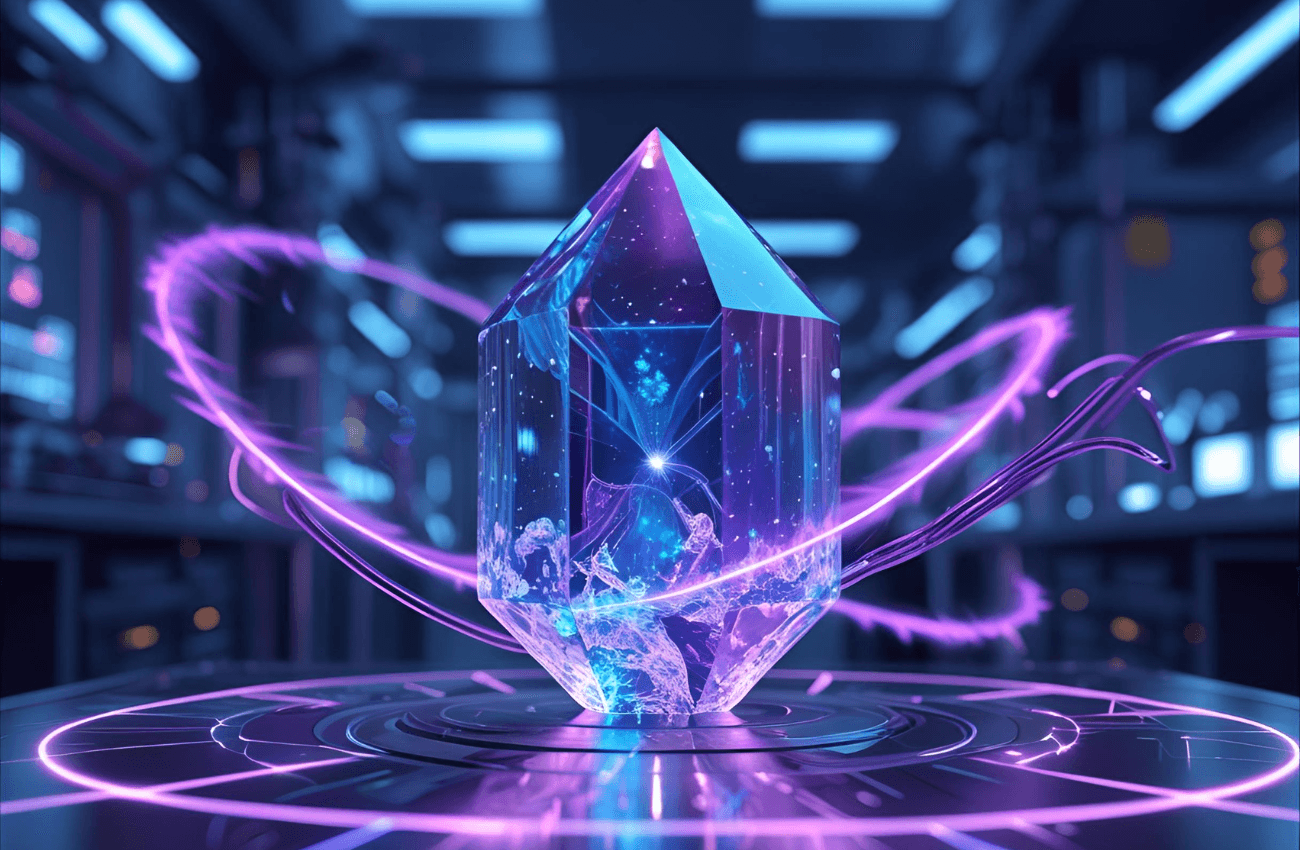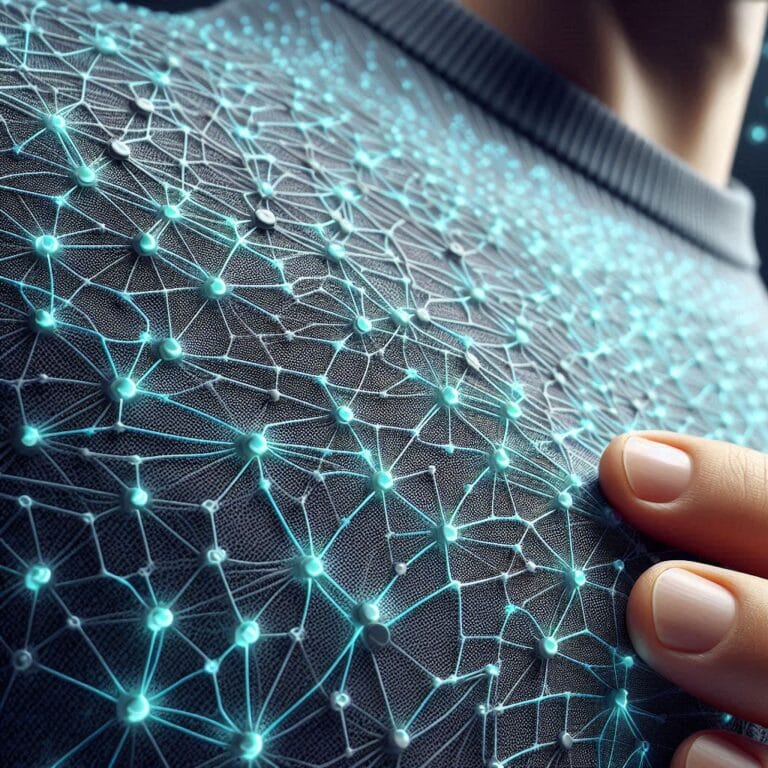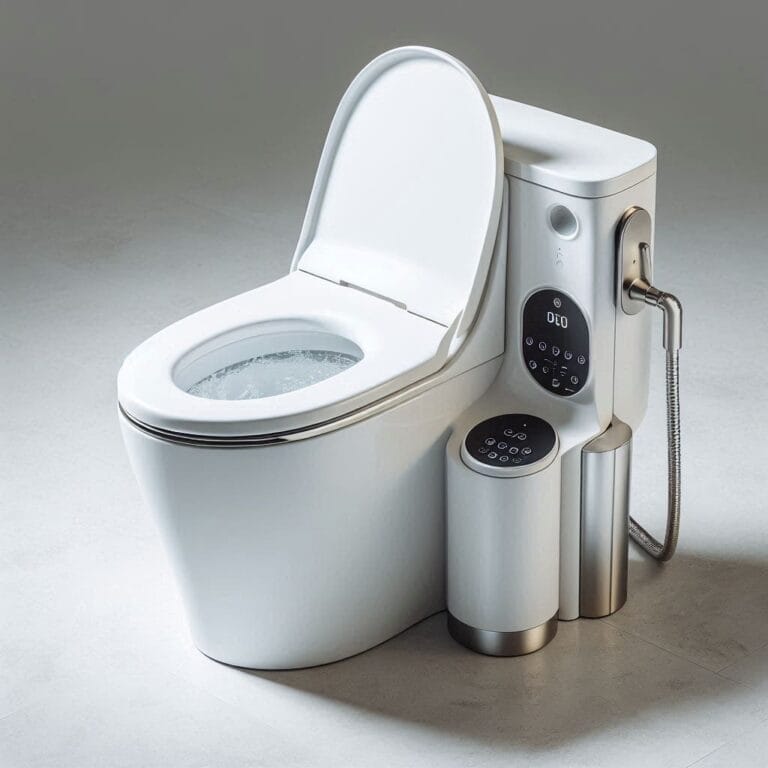🌀 Introduction: What If Time Could Crystallize?
For over a century, Einstein’s theories have defined how we understand time—as a continuous dimension that flows forward, never repeating. But what if time itself could take on structure—repeating like the atoms in a diamond or the lattice in a snowflake?
That’s the radical idea behind time crystals, a newly discovered state of matter that challenges some of physics’ most fundamental principles. First theorized in 2012 by Nobel laureate Frank Wilczek, time crystals are systems that spontaneously break time symmetry, meaning they repeat in time without consuming energy—an idea once thought impossible.

Unlike typical crystals, which are defined by patterns in space (think of the repeating grid of salt or quartz), time crystals repeat patterns through time—like a quantum metronome ticking endlessly, even in their lowest energy state.
So, are time crystals real? The answer is yes. In 2021, researchers at Google’s Quantum AI lab, in collaboration with physicists from Stanford and Princeton, successfully created a time crystal using a programmable quantum computer. The breakthrough sparked global excitement, marking a new chapter in condensed matter physics and quantum computing.
⌛ What Are Time Crystals? A New State of Matter Explained
To understand what makes time crystals so special, let’s compare them to what we already know about matter.
In a regular crystal—like ice or quartz—the atoms are arranged in a repeating spatial pattern. Move across the crystal, and you’ll encounter the same structure again and again. This is called spatial symmetry breaking: the atoms don’t distribute randomly, they align themselves in a predictable grid.
Now, flip that idea into the fourth dimension—time. A quantum time crystal is a system where atoms or qubits don’t just stay still—they oscillate in time with perfect regularity, even when the system has no external energy input. These oscillations are stable, recurring patterns that break time symmetry, because time is no longer uniform and smooth—it becomes structured.
This strange behavior is only possible in non-equilibrium matter—systems that never settle into a thermal balance. Unlike conventional materials, which eventually lose energy and become inert, time crystals stay in a constant cycle of motion without using up energy. It’s as if a pendulum kept swinging forever without friction or a push.

What’s more, these time-based patterns don’t arise from direct input—they emerge spontaneously from the system’s internal quantum dynamics. That’s what makes them fundamentally different from mechanical clocks or driven oscillators.
In essence, time crystals are a brand-new phase of matter, one that doesn’t just break the rules—it rewrites them.
🔬 How Are Time Crystals Made in the Lab?
So, how are time crystals made in practice? Creating a state of matter that breaks time symmetry isn’t something you can do with traditional lab tools. Instead, it requires cutting-edge quantum systems and extremely controlled environments where the laws of classical physics begin to blur.
🧊 Superconducting Qubits and Trapped Ions
One of the most successful time crystal experiments came from Google’s Quantum AI Lab, where researchers used superconducting qubits—the quantum equivalent of transistors—to form a time crystal inside a programmable quantum processor. By carefully manipulating these qubits, they achieved a system that flipped back and forth at regular intervals, without absorbing energy from the environment—a key requirement for true time-crystal behavior.
In another breakthrough, scientists at Stanford and Princeton used trapped ions—charged atoms held in place by electromagnetic fields—and hit them with precisely timed laser pulses. These lasers acted like a periodic “tick,” triggering motion in the ions. Remarkably, the ions oscillated not in sync with the pulse, but at a different, stable interval, indicating time symmetry breaking—a defining feature of time crystals.

⏱️ What Are Floquet Time Crystals?
This kind of behavior falls under a class known as Floquet time crystals, named after mathematician Gaston Floquet. In physics, a Floquet system refers to a quantum system subjected to continuous, time-periodic external driving. Imagine a system being “kicked” at regular time intervals (like with laser pulses), and instead of matching that rhythm, it settles into a slower, repeating pattern—as if your clock ticked every two seconds instead of one.
This subharmonic response (oscillating at a fraction of the drive frequency) shows that the system has entered a time-crystalline phase, despite being in its lowest energy state. It’s a bit like tapping a metronome and having it tick back at half your tempo—without ever losing sync or energy.
🌐 Boundary Time Crystals: Cracking the Edge of Quantum Matter
While most research on time crystals focuses on the entire system oscillating in time, a new frontier has emerged: boundary time crystals. These are exotic phases of matter that form not throughout the whole material, but on the edges or surfaces—where strange quantum behaviors tend to flourish.
🌊 What Are Boundary Time Crystals?
In physics, the boundary of a system—especially in quantum materials—is often where unexpected effects appear. Consider phenomena like surface superconductivity or the quantum Hall effect—examples of quantum behavior emerging under specific physical conditions. Similarly, in boundary time crystals, the time-symmetry-breaking behavior occurs only at the edges, not throughout the bulk of the material.
These time crystals don’t require periodic driving like their Floquet counterparts. Instead, they spontaneously start oscillating at the edges, even if the interior of the material remains static. This is linked to topological phases of matter—exotic states that depend on the system’s shape or structure rather than its composition.
🧪 Why It Matters
While still theoretical in many respects, experimental hints have begun to appear. For example, simulations suggest that certain 1D quantum spin chains exhibit edge-based time-crystalline behavior under specific conditions. These boundary phenomena could be more stable and accessible than full-system time crystals, making them a promising avenue for quantum information processing or error-resistant memory systems.
Because they localize energy and oscillation to predictable regions, boundary time crystals may pave the way for programmable quantum surfaces, where information can be stored or transmitted with high fidelity over time.
⚛️ Are Time Crystals Useful? Potential Applications in Quantum Tech
So far, time crystals might sound like a fascinating quantum curiosity—but are they actually useful? Surprisingly, yes. While still in the early stages, time crystals could have game-changing implications for the future of quantum technology.
🧠 Quantum Memory That Doesn’t Forget
One of the biggest challenges in quantum computing is decoherence—when qubits lose their information due to environmental noise or instability. Because time crystals operate in a non-equilibrium state that resists entropy, scientists believe they could help build quantum memory systems that store information more reliably over time.
By harnessing time symmetry breaking, these systems might “lock” quantum data into repetitive cycles, preventing it from drifting or decaying—essentially using rhythm to fight randomness.
🖥️ Toward Error-Resistant Quantum Computers
Quantum computers are highly sensitive and prone to error. Embedding quantum computing crystals (i.e., time crystals with stable oscillation patterns) into qubit systems could act as internal clocks or reference oscillators, enabling better error correction mechanisms. This would dramatically improve the stability and fidelity of quantum computations.
⏱️ Time-Based Sensors & More
Scientists believe time crystals could one day power incredibly precise time-based sensors—devices so sensitive they could detect the faintest shifts in time-varying fields. Picture a self-oscillating sensor with its own internal rhythm, capable of picking up even the tiniest external disturbances. Such technology could revolutionize gravitational wave detection, dark matter research, and ultra-accurate GPS systems.
Though much of this remains theoretical for now, the possibilities are vast. Time crystals may well become the foundational timing element in tomorrow’s quantum innovations.
🎮 Pop Culture Confusion: MK11, Adventure Time & Misconceptions
The term “time crystals” has gained buzz not only in science but also across gaming and pop culture—leading to a bit of confusion. Here’s what’s science, and what’s fiction.
🕹️ Mortal Kombat 11 (MK11): Not Quantum, Just Currency
If you’re searching “how to spend time crystals MK11”, you’re not diving into quantum mechanics—you’re in the realm of video game microtransactions.
In Mortal Kombat 11, Time Crystals serve as a premium currency, allowing players to buy cosmetic items such as skins, gear, and character customization options from the in-game store. They have nothing to do with physics or time symmetry; they’re named for thematic flair, not scientific relevance.
👉 You can spend Time Crystals in MK11 by visiting the Premium Store, rotating daily items, or using them to unlock Time Towers.
📺 Adventure Time: Cartoon Power Crystals
In the Adventure Time episode where “time crystals have power,” the term is used loosely to describe magical items that bend the rules of time for comic or dramatic effect. You can read the related lines in the Adventure Time script archive, where characters use “time crystals” to travel or manipulate moments—again, not rooted in actual physics.
🔍 Clarifying the Confusion
While pop culture references can be fun, real time crystals are quantum states of matter, not magical items or currency tokens. The surge in Google searches mixing these concepts gives your blog a unique chance to:
- Capture broader search traffic
- Educate curious readers
- Clarify and redirect them to real science
🧩 Conclusion: Time Crystals Are Real — But They’re Not Magic
Time crystals may sound like something from science fiction—a shimmering material that pulses through time without energy input—but they are very real, and their existence marks a paradigm shift in modern physics.
These strange systems challenge traditional laws, especially the notion that physical systems must eventually reach equilibrium. By breaking time symmetry, time crystals introduce the possibility of stable, repeating behavior in time, even in a system’s lowest-energy state—an idea Einstein and Schrödinger could have only dreamed of.
What sets time crystals apart from theoretical quantum oddities is their experimental validation. Projects from Google’s Quantum AI Lab, Harvard, Stanford, and others have successfully demonstrated time-crystalline behavior in superconducting qubits and trapped ion systems. These aren’t just thought experiments—they’re verified phenomena that researchers are actively building upon.
As we continue to explore the boundaries of quantum matter, time crystals offer a profound opportunity: to think of time not just as something that flows forward, but as something that can oscillate, loop, and repeat—like the ticking of an eternal clock built into the very structure of matter.
The future of time crystals may still be emerging, but one thing is clear: we’ve entered a new phase of physics, where time itself has patterns we’re only beginning to understand.
🧠 Glossary of Key Terms
| Term | Definition |
|---|---|
| Floquet system | A quantum system driven by periodic external forces (like lasers or pulses), enabling time-crystalline behavior through subharmonic oscillations. |
| Symmetry breaking | When a system that is initially symmetrical ends up in an asymmetrical state—time crystals break time symmetry by oscillating when they shouldn't. |
| Non-equilibrium matter | Matter that doesn’t settle into thermal equilibrium and remains dynamically active—necessary for time crystals to exist. |
| Quantum coherence | A property of quantum systems where particles exist in multiple states simultaneously; coherence must be preserved to maintain a time crystal’s oscillations. |
🧠 Fascinated by breakthroughs that bend the rules of science?
Explore more emerging innovations pushing the boundaries of physics and computing:
-
Aerial Computing – Discover how drones and airborne systems are creating the next frontier in cloud computing.
-
Unique Molecular Identifiers (UMIs) – A look into how barcoding individual DNA molecules is revolutionizing genomic accuracy.
-
Thermal Copper Pillar Bump Technology – Learn how this advanced packaging method is solving heat dissipation challenges in modern chips.
-
Magnonics: The Future of Spin-Wave Computing – Dive into a potential silicon alternative that uses spin waves to process information.
Stay curious—because the future of physics is stranger (and more exciting) than fiction.






